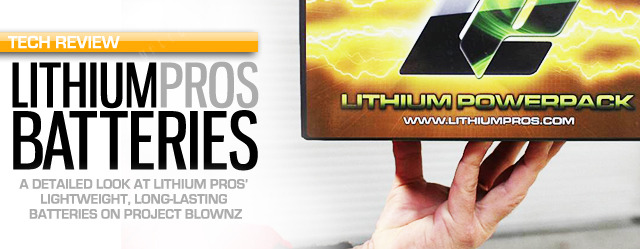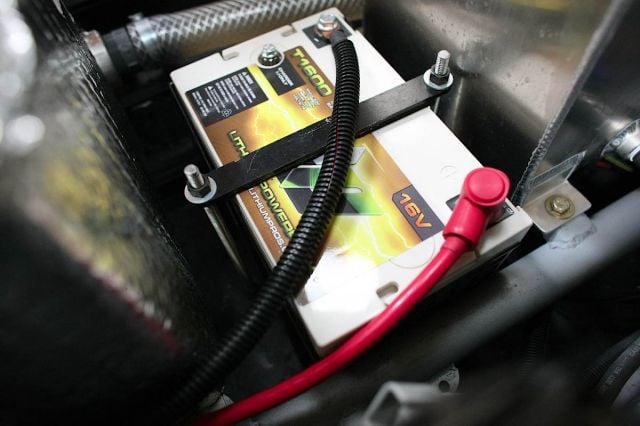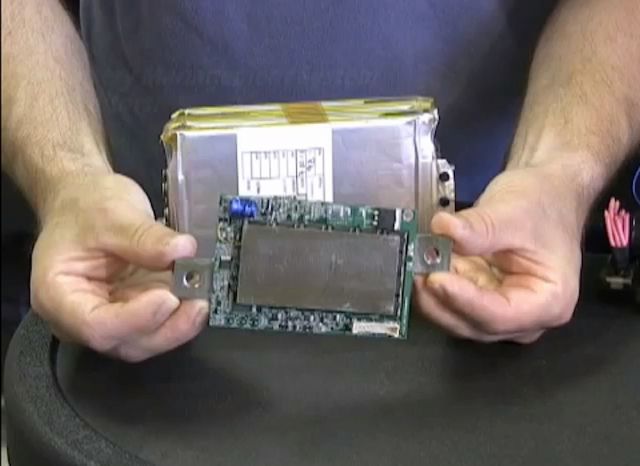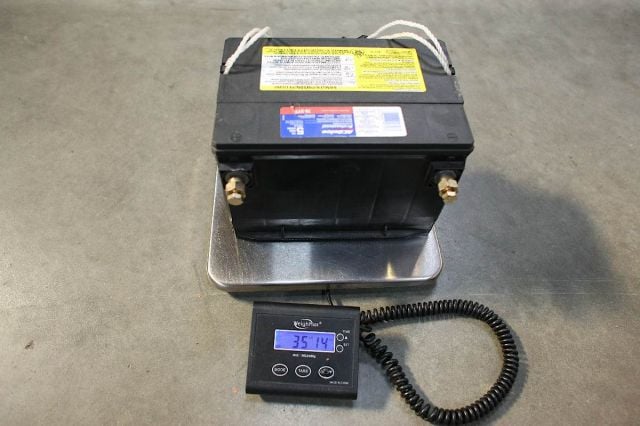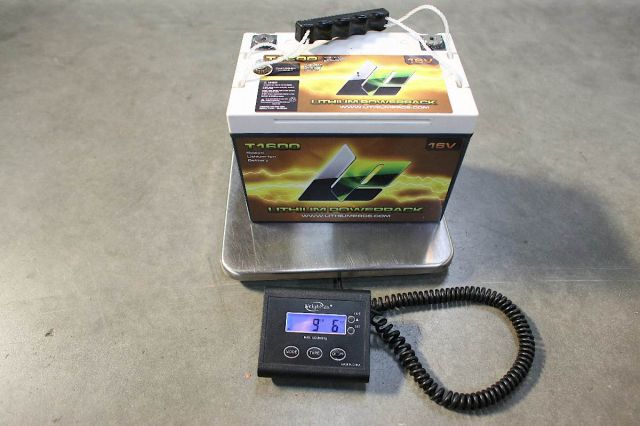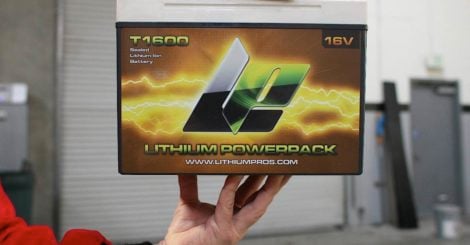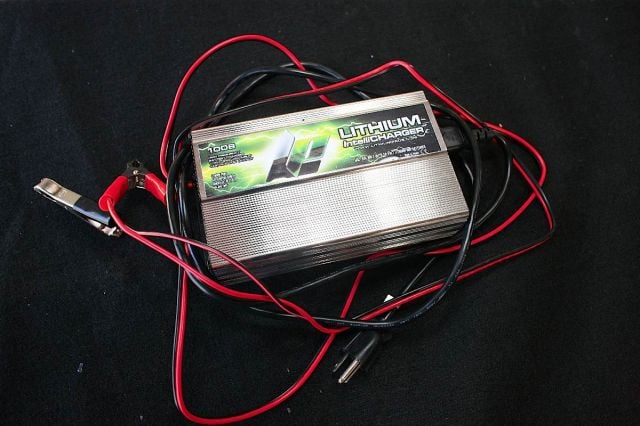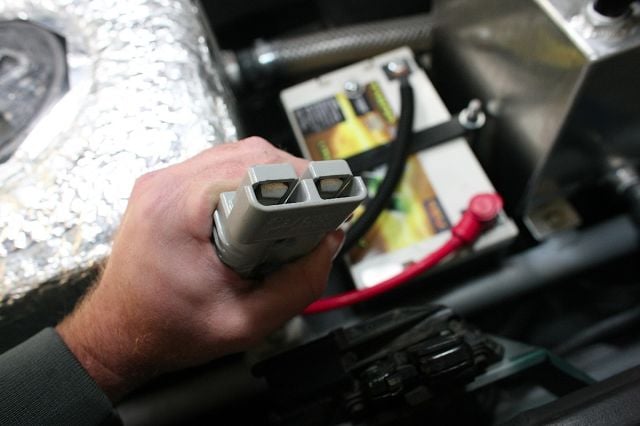In recent years you’ve no doubt heard the term lithium battery, or lithium ion. These batteries are known for their high power output while remaining lightweight and compact. They’re used to power everything from cellphones and laptops, to hybrid and electric cars. Today’s lithium batteries aren’t just for powering gadgets and so called green cars though; they’re making their way into the racing world, offering an array of advantages. We installed a battery from Lithium Pros [2] in our Project BlownZ [3] drag car, and talked with the company about the technology, and advantages of using this product in not only a race car, but also street going machines as well.
What Is A Lithium Ion Battery
Lithium Ion batteries are much different than a standard lead acid battery. Rather than relying on lead plates and sulfuric acid, these batteries use a different type of chemistry. Lithium ion batteries are typically constructed with lithium and carbon electrodes which means they’re lightweight. Lithium also is a highly reactive chemical substance with greater energy density than other battery materials.
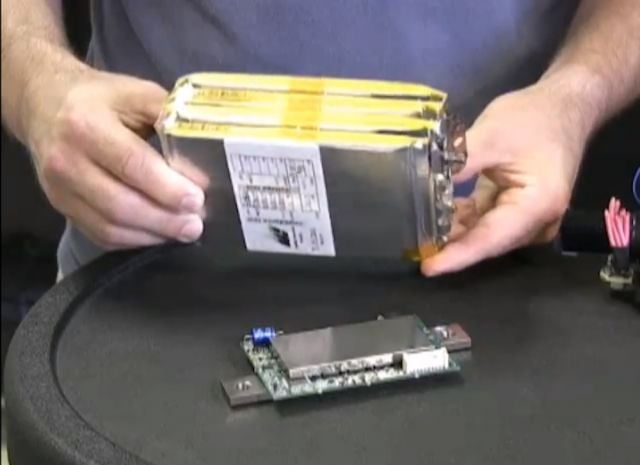 [4]
[4]The inside of a Lithium Pros battery contains a set of prismatic lithium cells connected together in series or parallel to achieve the proper voltage and amperage. These lithium ion cells are much lighter and more efficient than a lead acid battery of comparable output.
Lithium Pros batteries are constructed from multiple cells. Their batteries are built with high quality prismatic cells. This means the cells are a flat design, reducing the space and allowing them to be packaged more easily than other designs. Each cell is in fact an individual battery and needs to be treated as such. Each cell is connected together in series, and parallel to achieve the desired voltage and amperage output.
Battery Protection
Getting long life from a lithium ion pack is not guaranteed and is more a game of chance when the battery does not have robust battery management. -Kevin Bennett
If you browse around the internet enough, you’ll find horror stories of lithium-type batteries bursting into flames or exploding. In reality, lithium ion cells typically only have a few failures per million manufactured. Fires or explosions are rare, and often the result of neglect, abuse, or low quality components. Every battery offered by Lithium Pros is constructed from high quality lithium phosphate cells, which are sourced from a licensed Phostech manufacturer designed to the highest standards with safety in mind.
These batteries also all feature circuit board-controlled battery protection. Circuit board control is an intelligent way of managing various battery conditions. Unlike a mechanical means of control, which could malfunction under high vibration, circuit boards are capable of withstanding the g-force and vibration of a racing environment. “Getting long life from a lithium ion pack is not guaranteed and is more a game of chance when the battery does not have robust battery management,” says Lithium Pros, Kevin Bennett.
Balancing
Balancing is a process in which all cells in the battery are equalized. The cells should all have the same capacity, and state of charge. This means that the battery will operate consistently. A balancing system is built into all of Lithium Pros batteries.
Battery Management System
Lithium ion batteries should have some form of control system. Lithium Pros incorporates battery controls into all of the batteries they manufacture, with an internal circuit board component. The on board control system protects the battery from over charging, balances the lithium ion cells, and prevents the battery from over charging, and over discharging. This not only prolongs battery life, but also prevents potentially dangerous situations that can arise from improper use of a lithium ion battery.
Lithium Pros uses an onboard battery management system in it’s T and L series batteries. This system manages several aspects of the battery’s operation and protects it from premature failure.
The T-series batteries use a onboard circuit board to monitor charging and protect the battery from being overcharged. If a charging system fault is detected, the onboard control will protect the battery by disconnecting it from charging until the fault is corrected.
The onboard Mosfet computer in the L series batteries monitors for short circuit, over current, low voltage, over voltage, and over temperature. If any of these faults occur, the battery is disconnected to prevent damage to it or the car.
Advantages to Lithium Ion
Bennett sums up the advantages of Lithium Pros batteries like this, “Lithium Pros batteries have three distinct advantages. They are very lightweight, they recharge up to five times faster, and they hold a higher voltage during discharge.”
Perhaps of greatest interest to drag racers is the weight advantages of using a Lithium Pros battery. These batteries typically are 60-80 percent lighter than a comparable lead acid battery. Some of the largest models from Lithium Pros weigh only 9-1/2 pounds, compared to over 46 pounds for a typical lead acid battery of comparable size.
A Lithium Pros battery is extremely light when you compare it’s energy density. “A typical Lithium Pros battery has an energy density of about 150 watts of electricity per kilogram (or 2.2 pounds) while a typical lead acid battery offers only 25 watts per kilogram,” explains Bennett. This means it takes six kilograms of lead acid battery to store the same amount of energy in one kilogram of lithium ion battery. As we all know, weight control and placing weight where you need it in a race car is a critical part of race day setup. Reducing the total weight of the battery allows those pounds to be placed in another area of the car where they may be better suited, or completely left out.
Faster Charging
Lithium Pros batteries are fast charging as well. Many drag racers do not run an alternator and must recharge their batteries between rounds. Sometimes those round breaks can last one or two hours, sometimes they’re less than 30 minutes, or even hot lapped. A Lithium Pros battery can accept current more rapidly than a typical lead acid battery, which allows the batteries to often be recharged in as little as 10-15 minutes.
Left: This lead acid battery of the same size as the Lithium Pros battery we use in BlownZ weighs 35 pounds, 14 ounces. Center: The Lithium Pros battery used in BlownZ weighs just nine pounds, six ounces. That's a weight savings of 26-1/2 pounds. Far Right: This is the Lithium Pros battery out of BlownZ. It is nearly impossible to hold a comparable lead acid battery like this.
Deep discharge and consistent performance.
Racers not running an alternator are likely familiar with deep cycling their batteries. Due to the high demands of onboard components such as computers, data loggers, fans, nitrous systems, etc., a typical lead acid battery may be completely discharged by the time a car makes it back to the pits.
Lithium Pros batteries have three distinct advantages. They are very lightweight, they recharge up to 5x faster, and they hold a higher voltage during discharge. -Kevin Bennett
Also, as a lead acid battery discharges its overall available voltage and performance decrease. If you’ve experienced a battery that’s near the end of it’s available discharge, you’ve likely noticed anything from simply slow to no cranking, all the way up to glitches in solenoids, instruments, warning lights, data logging, and computer control.
“Lead acid batteries will stop supplying power once they’re discharged approximately 50 percent,” says Bennett. “This is another key area where a lithium ion battery has an advantage. These batteries have a depth of discharge of 80 percent. As they’re discharged, performance remains consistent, including voltage. This means that up until the maximum safe discharge for the battery is reached, it will continue to provide consistent voltage with no noticeable drop in power.”
Longer Life
All batteries have a service life. Deep cycling a typical lead acid battery can typically shorten it’s life, and allowing a battery to sit for any period of time will also affect its performance.
Deep cycling does not affect a lithium ion battery. Also these batteries only lose about five percent of their state of charge per month as they sit. This means in storage the battery would only need to be recharged about every five months. “The lithium ion battery doesn’t need float charging at all, but float chargers prove to be an inexpensive way to power the small parasitic loads of the vehicle,” says Bennett.
While most typical lead acid batteries last two to five years, a Lithium Pros battery, when properly cared for, may last as much as 10 years.
Types and Applications
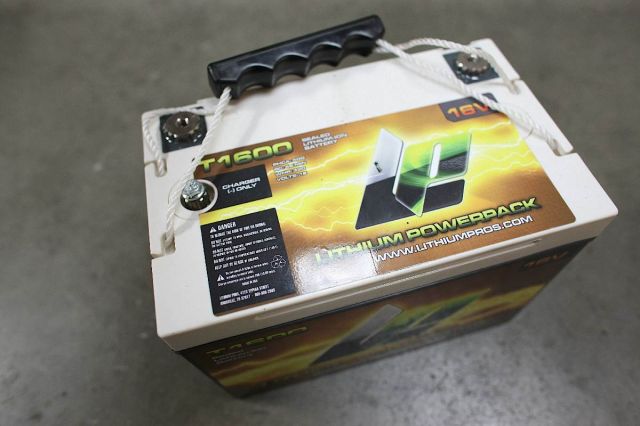 [10]
[10]Our T-series battery features a third terminal for battery charger ground connection. This routes the charge through the battery management system, preventing an overcharge and damage.
Lithium Pros offer three different series of batteries depending upon a racer or enthusiasts individual needs.
C Series
- Intended for street cars or street/strip enthusiasts
- Available in 12-volt or 16-volt configuration
- For use in vehicles with an alternator
- Has a balancing system on board to maximize battery life and performance
- 60 day money back guarantee
- 2 year pro-rated warranty.
- Most economically priced
T Series
- Intended for drag strip and dirt track applications
- Designed for deep discharge and not intended for use with an alternator
- Available only in 16-volt.
- Uses unique three terminal design. The third terminal is for battery charger ground
- Has an onboard circuit board to monitor for charging faults
- All current from charger is routed through the protection board via the third terminal
- Special charger recommended
- 60 day money back guarantee
- 2 year pro-rated warranty
L Series
- Full onboard battery management with Mosfet control
- Mosfet control system disconnects battery if a fault occurs and will automatically reconnect when fault is no longer detected
- Recommended for deep cycling situations
- Ideal for situations where monitoring battery charging is difficult
- Suited for a wide variety of racing applications
- Full 2 year warranty
Precautions
As with any battery type, precautions must be taken in caring for the battery to prevent premature failure, damage or short service life. This includes:
- Use the proper charger, as some chargers operate at high voltage that will damage Lithium Ion batteries.
- Don’t jump start: the sudden surge of volts and amps will overload and damage a lithium ion battery as they are most vulnerable when nearly completely discharged.
- Manage temperature: when storing, keeping the battery at room temperature will help increase it’s service life.
- Don’t fully discharge: this can damage a lithium ion battery, or even cause failure of the cells.
Left: To ensure our T-series battery is charged properly, we utilize this charger from Lithium Pros. Right: Another precaution taken is this quick disconnect, which can only be plugged in one way, preventing an accidental reverse polarity condition.
While lithium ion batteries are more expensive than some of their competitors their advantages still offer excellent value for the dollar. The substantial weight savings alone costs less money per pound than replacing other components with carbon fiber or titanium. There’s also the deep discharge and deep cycling advantages to consider. The rapid charging times, and consistent performance throughout the discharge cycle are also key advantages over traditional batteries.
Racers and car builders will scrutinize every system and component of a car, searching for potential advantages. Minutes spent on maintenance are often critical between rounds as well. With faster charging times, and lighter weight, a Lithium Pros battery may be an important piece to the race day winning formula.
